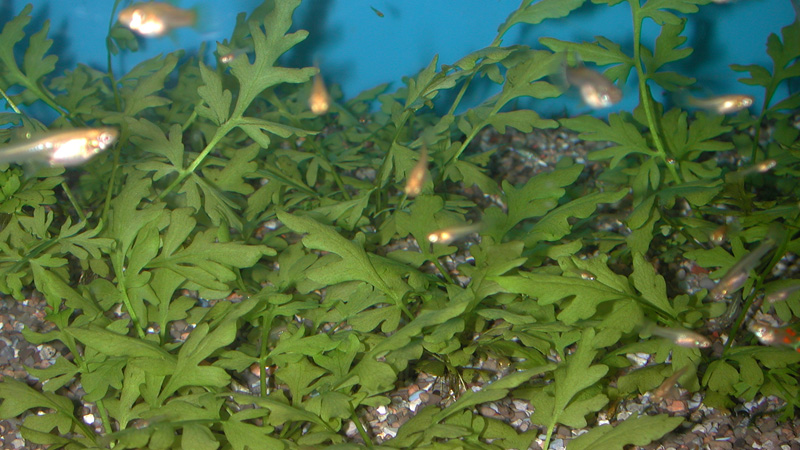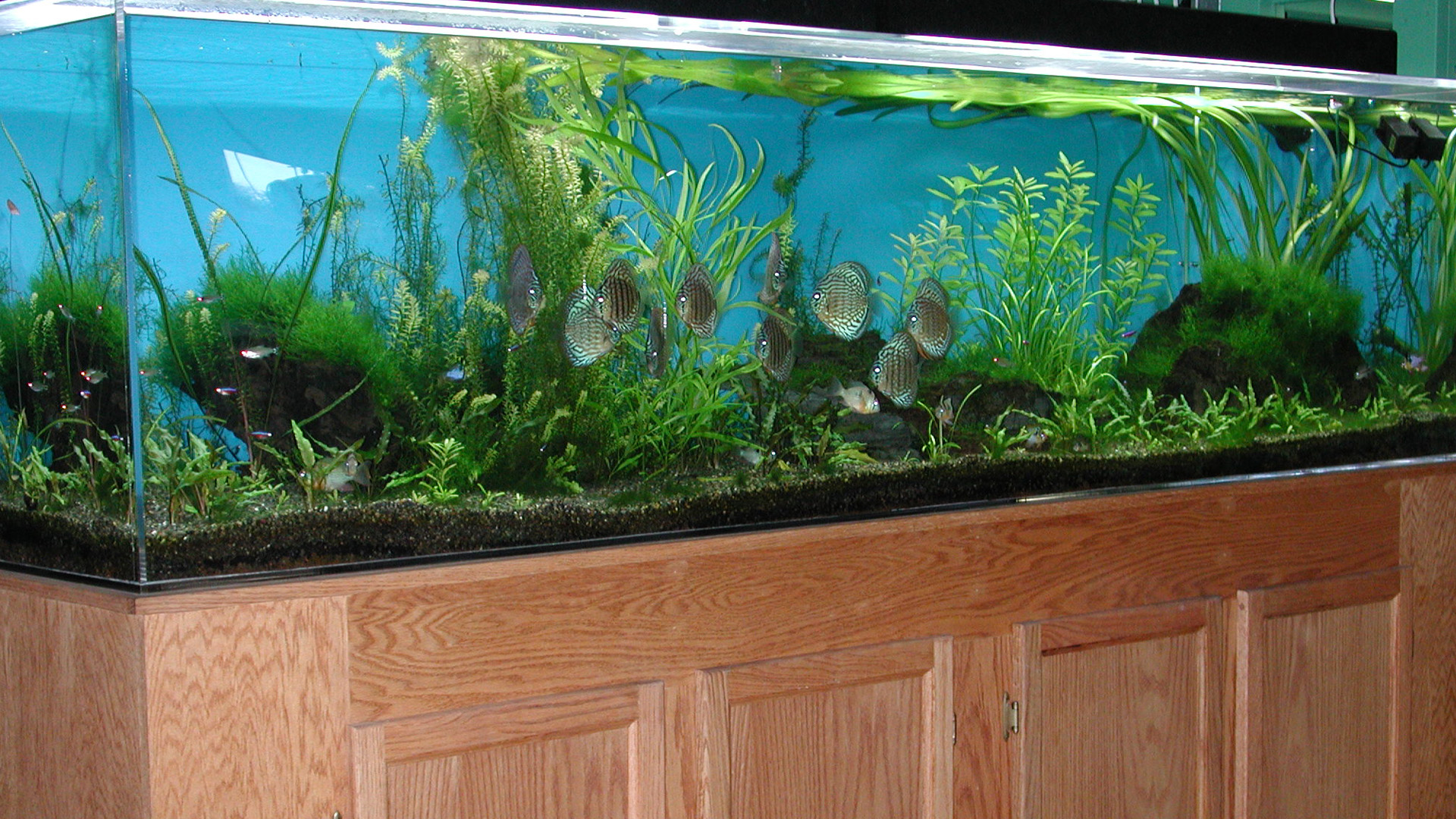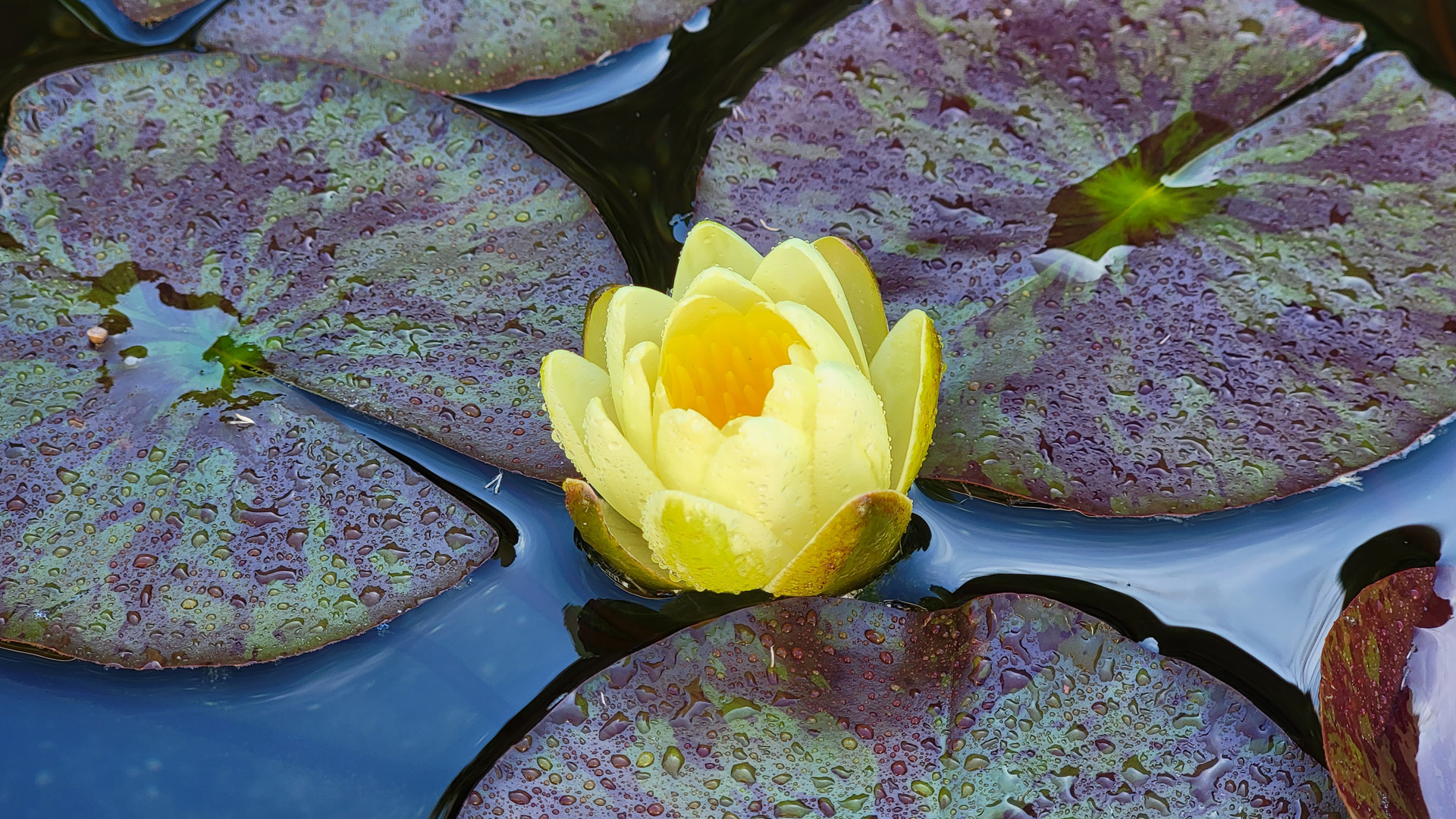Plants
Aquatic plants kept in the hobby have very diverse requirements to thrive. Some aquatic plants thrive in soft acidic water, while others prefer hard alkaline water. The plant growth rate will affect how fast nutrients will be utilized. Water chemistry and nutrients interact to make the nutrients plants need available to thrive.
Many aquatic plant species have adapted to use bicarbonate as a source of CO2. These plants have evolved in waters where the pH is high, and the availability of CO2 is low. These plants do use CO2 when the gas is available. Plants that can use bicarbonate can significantly affect the pH during the daytime.
Aquatic plants that can use bicarbonate will create carbonate, which can dramatically raise the pH of the system. In the author's own lab system, Vallisneria americana (corkscrew val) raised the pH from 7.0 to 9.4 (< 2 dKH [24 ppm with Hanna Freshwater Alkalinity Colorimeter]) during the day. Using CO2 as a carbon source is less energy intensive than bicarbonate. For some aquatic plants that can use bicarbonate, this ability may not be triggered until the pH is high enough in the system to restrict the availability of CO2.
Many aquatic plants grown in the substrate (submerged) in our aquariums can also be grown emersed (roots in the water with leaves exposed to the air). The leaf structure of the same plant will differ depending on whether it is submerged or emersed. In natural marginal aquatic zones, you will often find both plant growth forms. Multiple leaf forms depending on environmental conditions are known as heterophylly.



Many plants kept in the aquarium and pond hobby are heterophyllous. Plants that are heterophyllous are typically produced by nurseries with the leaves exposed to the air for maximum growth rate. When hobbyists add these plants to their system, the leaves grown exposed to air will die back, and new leaves will grow adapted to a submerged environment. Old leaves should be removed as new growth emerges.
A macrophyte is a plant that grows in or near water and is either emergent, submerged, or floating. Aquatic plants hobbyists plant in the substrate are all macrophytes. Common floating macrophytes are duckweed (Lemna minor), water lettuce (Pistia stratiotes), and frogbit (Limnobium laevigatum).
An epiphyte is a term the aquarium hobby has applied to aquatic plants that are attached to wood or rocks and draw their nutrients from the water column. Technically, an epiphyte is a plant that grows on another plant but is not parasitic. Many ferns, bromeliads, air plants, Spanish moss (Tillandsia usneoides), and orchids are epiphytes.

In the aquarium, common epiphytes are Java fern (Leptochilus pteropus), Anubias spp., Bucephalandra spp., and Bolbitis heudelotii (African water fern).
A pteridophyte is a vascular plant that disperses spores. Java fern (Leptochilus pteropus) and Bolbitis heudelotii (African water fern) are common pteridophytes in the hobby. Even though Lomariopsis Lineata (susswassertang, or pellia) looks like a liverwort or algae, it is currently classified as a species of fern native to South East Asia.

A bryophyte is any nonvascular seedless plant. Vesicularia dubyana (Java moss), Riccia fluitans (crystalwort), Frontinalis antipyretica (willow moss), and Taxiphyllum barbieri (bogor moss).

Hobbyists will often use epiphytes exclusively in their displays when the system has large fish that like to sand sift or move the substrate.
Rheophytes are aquatic plants that grow in flowing water. Any plant that grows in running water is a rheophyte. Many plants in the hobby grow in fast-flowing water. Cryptocoryne species are often found in fast-flowing water. Many rheophytes can also be found in ponds, lakes, and marshes.
Helophytes are aquatic plants rooted in the bottom but with leaves above the waterline. During sunny days, dissolved carbon dioxide can quickly be used in water by photosynthesis. Many plants growing in relatively stagnant water have emergent leaves to gain access to the CO2-rich air. Some common helophytes in the aquarium and pond hobby are water lily (Nymphaea spp.), lotus (Nelumbo spp.), and Aponogeton spp.

Floating macrophytes access the CO2-rich air. Floating macrophytes are common in ponds, wetlands, and river banks with little current. These aquatic plants use nutrients from the water column. Floating plants grow and proliferate quickly and use nutrients at four times or more the rate of submerged plants. For systems with an overabundance of nitrate accumulation, floating plants can be considered a strategy to reduce nitrate.
Floating macrophytes do not oxygenate the water column as well as submerged plants. This fact must be taken into account when using floating aquatic plants. The dissolved oxygen content of systems with a significant surface coverage of aquatic plants can drop below the minimum most aquarium fish need. Ensuring a system has enough surface agitation or gas exchange can prevent a catastrophic outcome. Fish that have adapted to living in low-oxygen environments have the ability to breathe air like anabantoids (labyrinth fish) and make a good choice for systems with heavy floating plant coverage.
When setting up a new system, choose plants that are grown submerged only. Because new systems tend to be ideal environments for algae, the plant choice, in the beginning, can help minimize algae. Fast-growing plants like Vallisneria spp., Hygrophila polysperma (common hygro), and water sprite (Ceratopteris thalictroides) will help compete with algae for nutrients. Avoid epiphytes in new systems as most are slow growers and are grown emersed at nurseries.
Plants grown for the hobby in nurseries emersed will be algae magnets in new systems. The leaves on emersed plants will die back when submerged, making it an attractive surface for algae to grow.
Local fish clubs and local aquarium forums are an excellent way to network with other planted aquarium hobbyists. Many of these hobbyists have excess plants grown submerged that will make ideal additions to a new system. They not only can resist algae growth, but they are a way to diversify the biome cycle. There is a minor risk of introducing fish disease, but the benefit of introducing beneficial organisms to the system may outway the risk.
The substrate of well-established systems (over a year old) contains a healthy population of rhizobacteria which are plant growth-promoting bacteria that also help prevent diseases.
Bacillus spp. can promote plant growth and suppress diseases by producing phytohormones and antibacterial/antifungal compounds. Pseudomonas spp. aids plants in iron acquisition.
Root health is crucial for aquatic plants. The rhizosphere is the area around a plant root inhabited by a unique population of microorganisms. An array of compounds such as sugars, amino acids, organic acids, fatty acids, aromatic acids, aliphatic acids, sterols, hormones, vitamins, enzymes, phenolics, and nucleotides are found in the rhizosphere.
The rhizosphere is not a region of definable size or shape. The rhizosphere consists of a gradient in chemical, biological, and physical properties that change radially and longitudinally along the root.
As plant roots grow, they release mucilage at the root cap epidermal cells to provide lubrication. The mucilage assists nutrient acquisition and binds substrate particles, forming aggregates that improve substrate quality by increasing water infiltration and aeration.
Cells lining and capping the root meristem are programmed to slough off, which helps to reduce frictional forces that would otherwise damage the root. A root meristem is a tissue found in plants with undifferentiated cells (meristematic cells) capable of cell division. The meristem cells can develop into all the other plant tissues and organs. Root cells sloughed off continue to function and secrete mucilage for several days. The mucilage has been shown to attract beneficial microorganisms, serve as an attractant for root pathogens, and sequester toxic metals.

The roots of macrophytes oxygenate the substrate[63]. The area immediately around the roots in the substrate provides aerobic bacteria with oxygen, which in turn provides nitrogen and sulfate to the plant roots. Emersed plants transport air oxygen to the substrate; submerged aquatic plants transport photosynthetic oxygen. The aerial advantages of emersed plants also add more oxygen to the substrate.
Plants have been shown by science to engage in chemical warfare to ensure plants from other species do not encroach on their space and compete for nutrients. The allelochemicals they produce can inhibit the growth and health of plants in the system of other species. When exploring plant health issues, suspect allelopathy if nutrient deficiencies or excess nutrients do not appear to be an issue.
Multiple studies have shown allelochemicals effect on different plant species is highly variable. Some studies have shown increased plant allelochemicals when other plant roots invade the rhizosphere.
Allelochemicals not only can inhibit plant growth, but they also can affect cyanobacteria, algae, and fungi. Algae can also produce allelochemicals that can inhibit other alga species from growing.
Moving a stressed plant to another system where it is the only plant can help determine if allelopathy is at play in the display.
Aquatic plants use CO2 at different rates. Plants that use CO2 quickly from the water column can outcompete other plants in the system for carbon. Fast-growing plants are very efficient at extracting CO2. If plant growth favors a specific species, try moving it to another system to see if the remaining plants' growth responds.